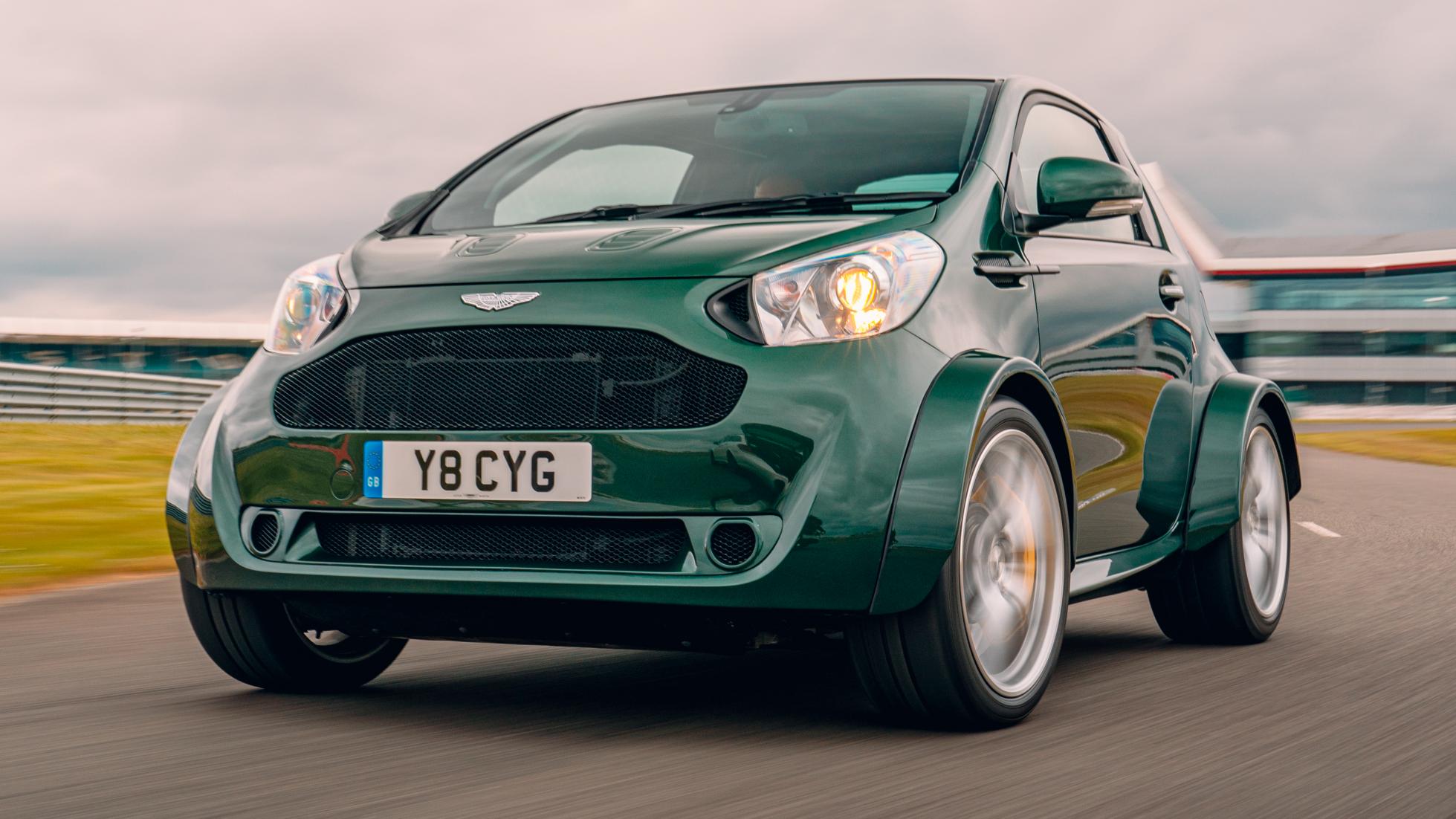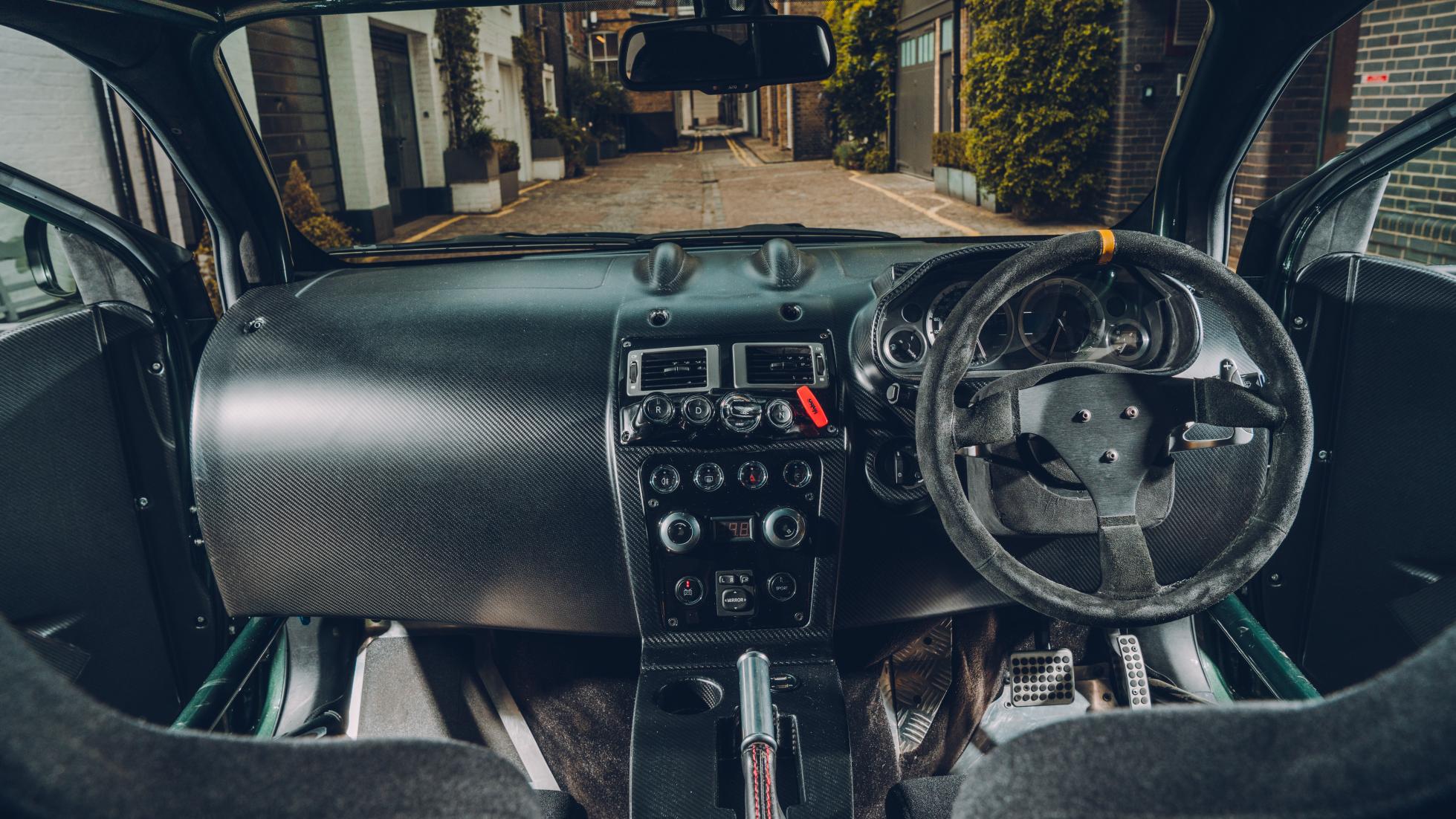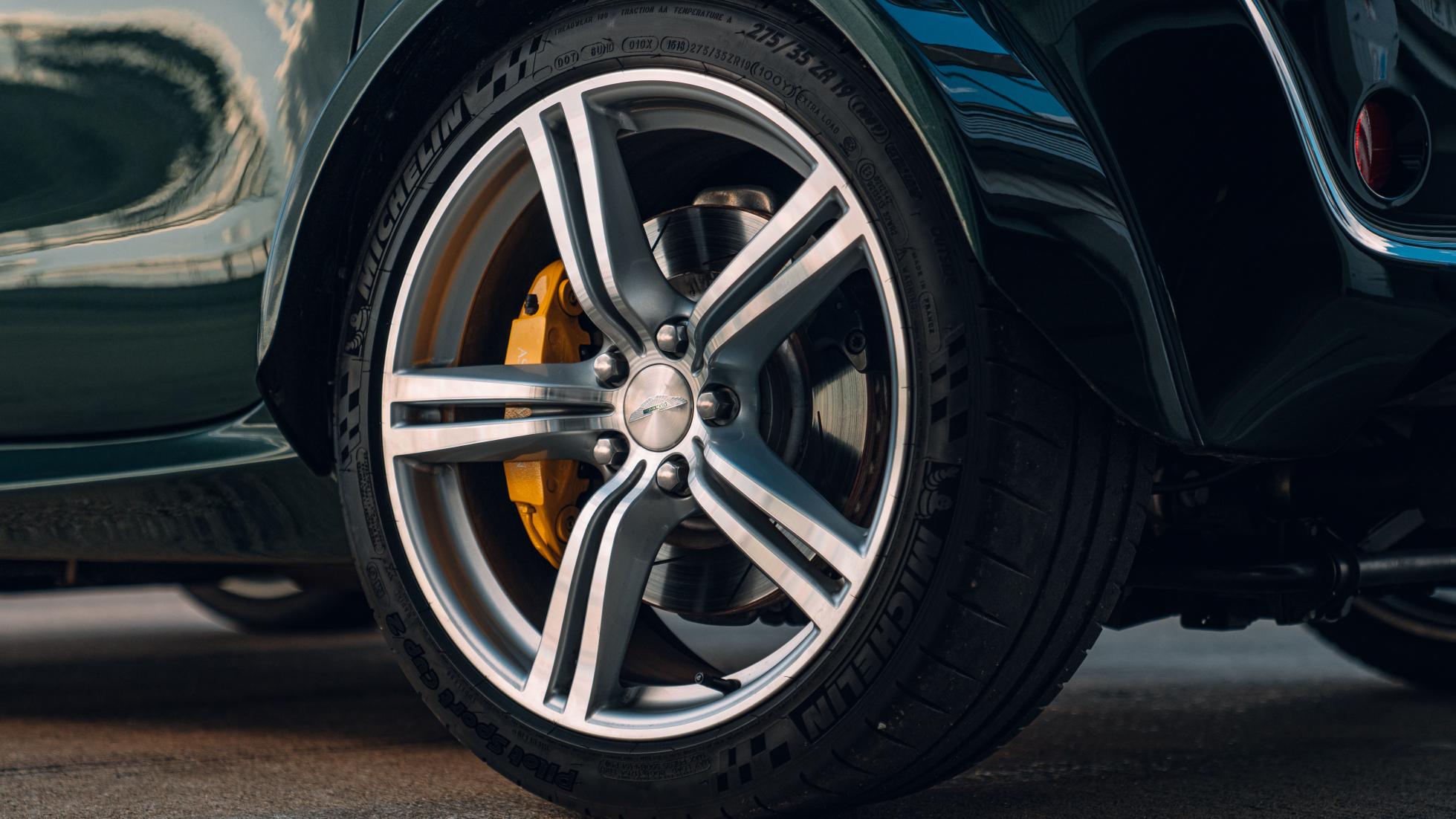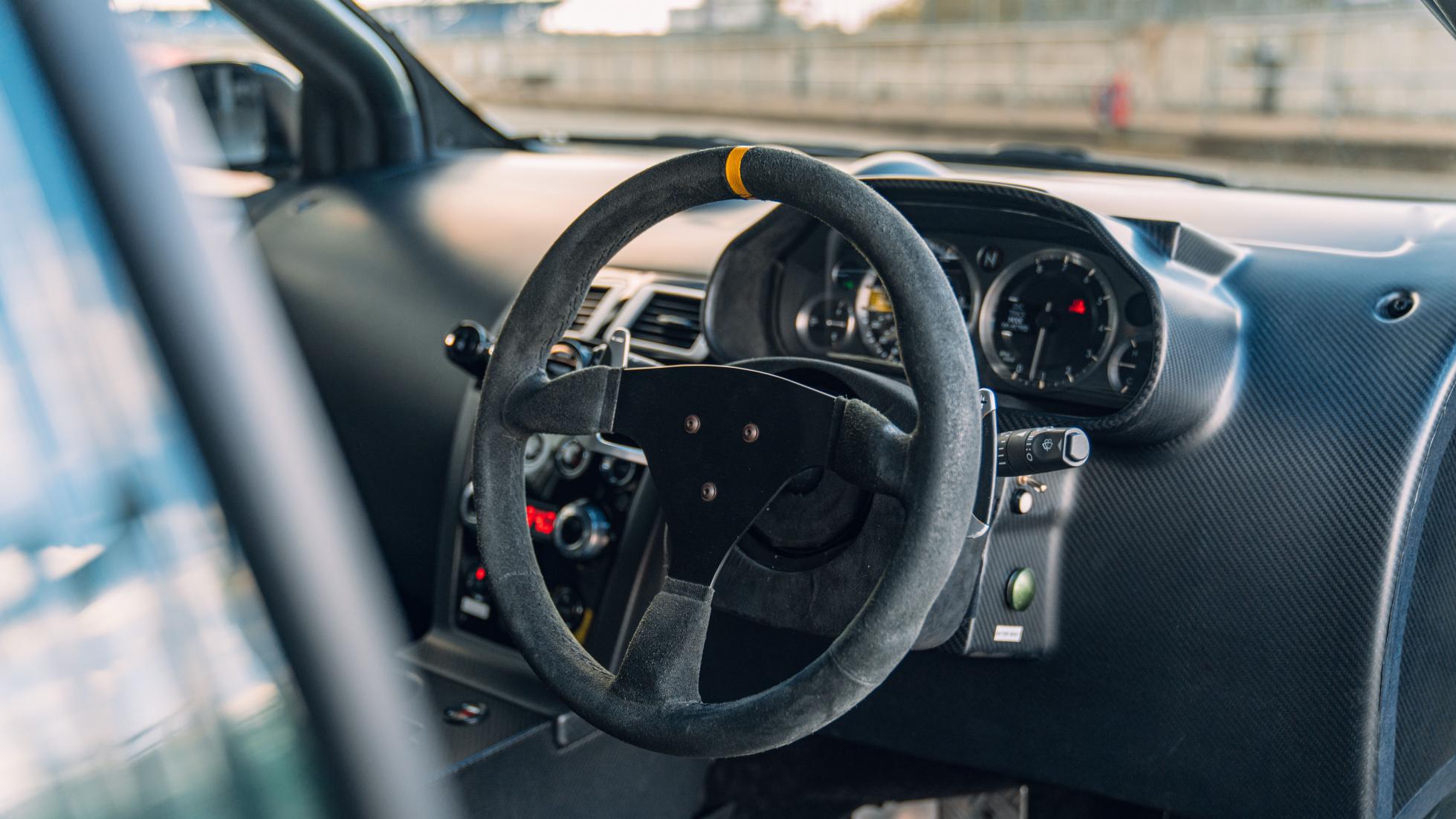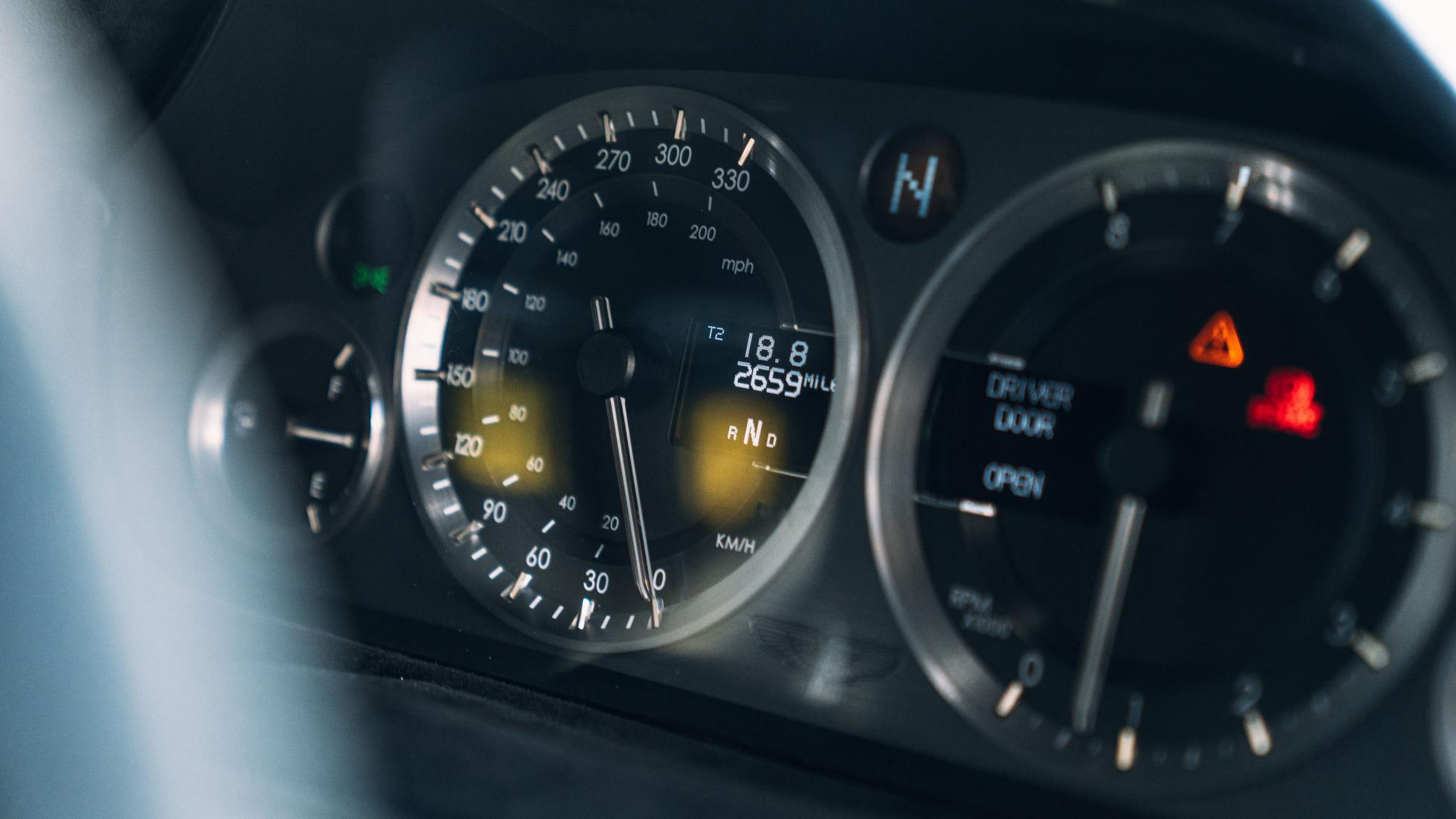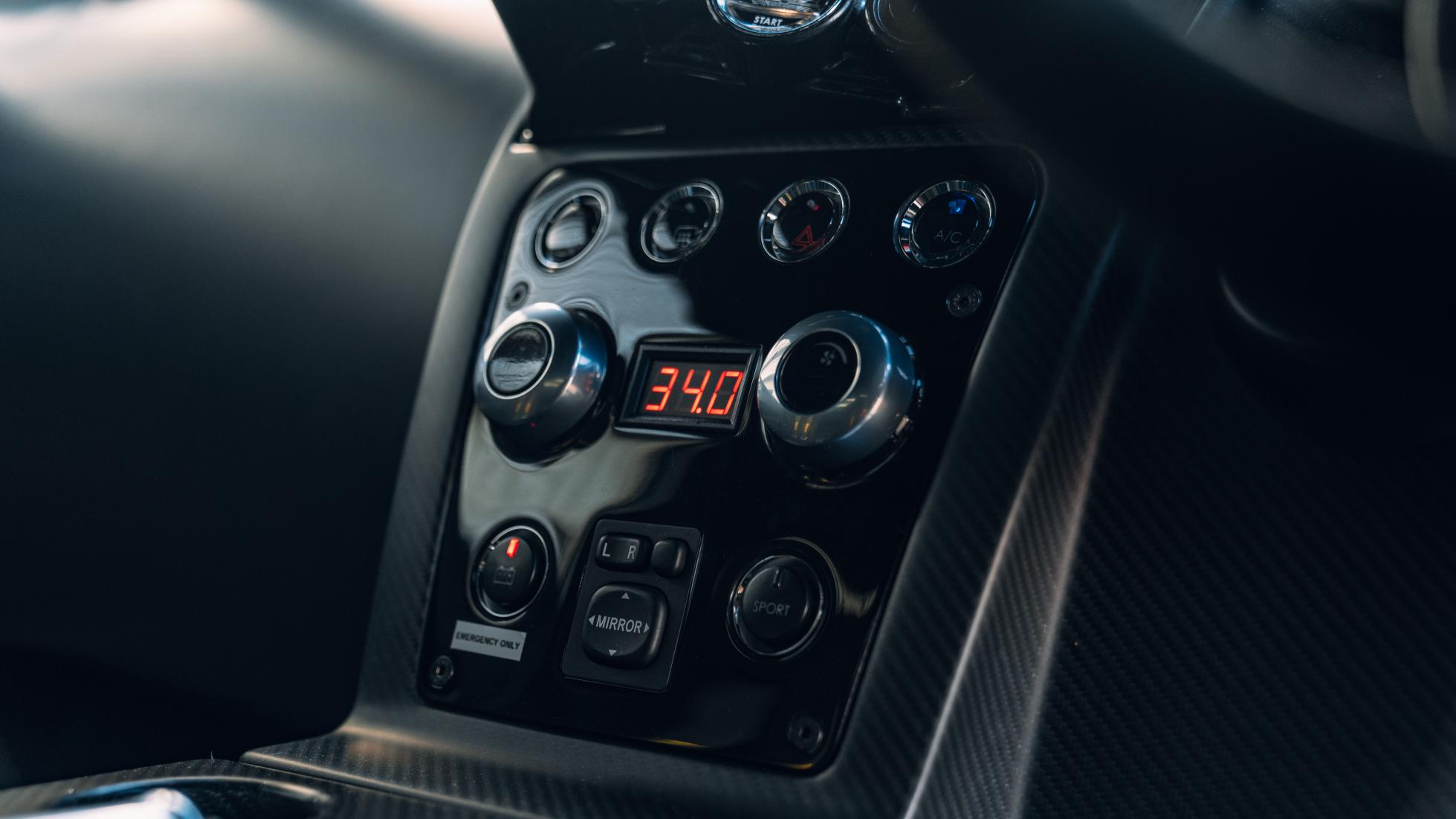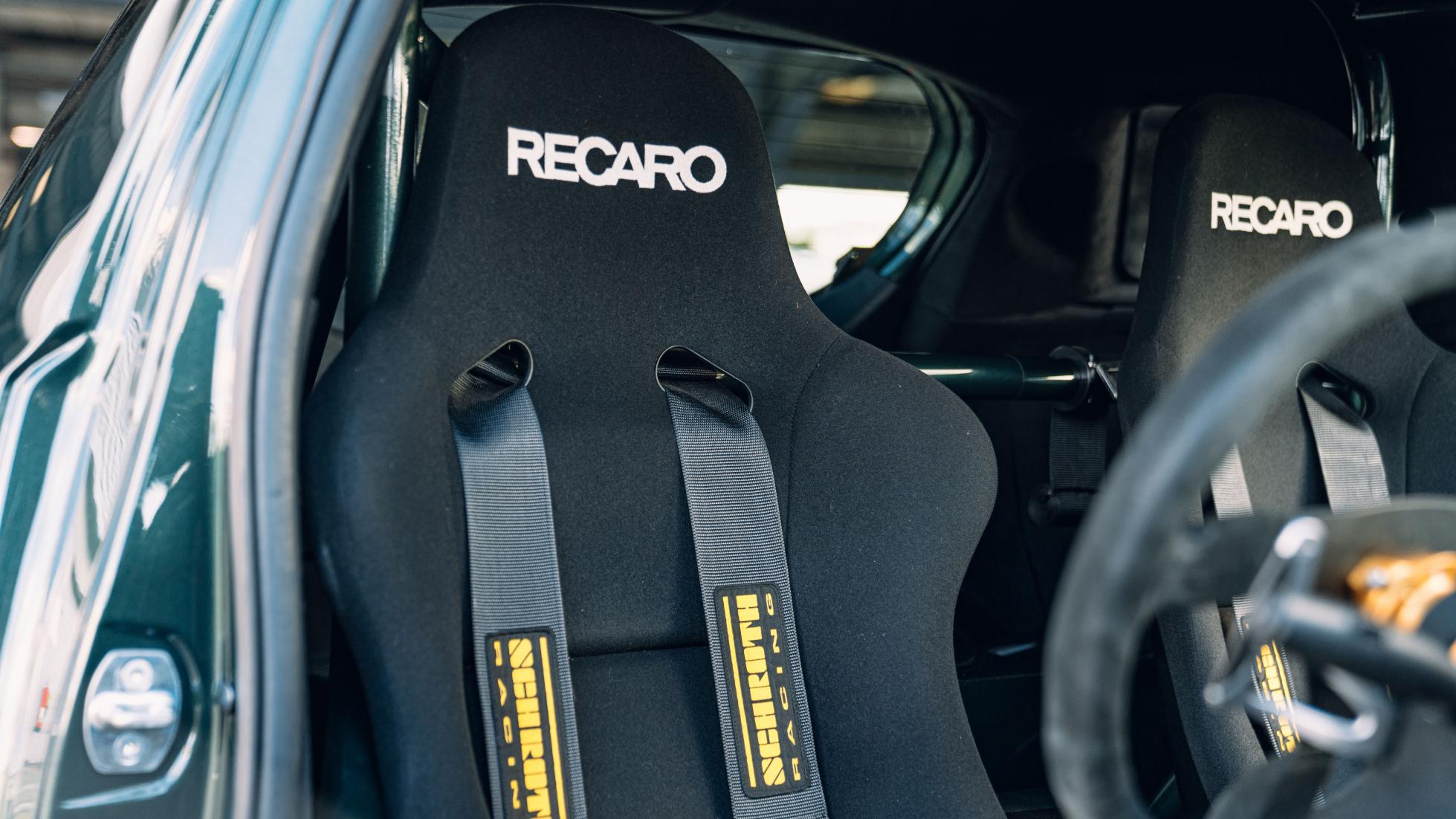Aston Martin Cygnet V8 review: 430bhp 'city car' tested

OVERVIEW – What is it?
Remember the Aston Martin Cygnet? The city car Aston’s former CEO Ulrich Bez used as a leftfield loophole to lower the firm’s emissions back in 2011. Somewhat hilariously, Aston’s wishy-washy marketing described it as a “tender” – a sort of short-range urban dinghy to your DBS yacht. In reality, it was an utterly extortionate, £31k (RM178k), rebadged Toyota iQ with a leathery interior that only lasted two years before being swept under the carpet. Quite right, too. It was one of the biggest jokes in motoring history. An April fool PR stunt made real. But it’s funny how perspective can change with time and the application of a 4.7-litre V8 engine.
That’s because this isn’t any Aston Martin Cygnet. It’s what can only be described as an engineering inevitability: a V8 Cygnet. No chop-shop special, either. An actual Aston Martin from Gaydon’s Q division. See, if you leave a set of Aston Martin engineers in a room with an old Vantage S and a small Japanese city car for long enough, eventually someone will go all Spice Girls and make two become one. It was an idea Aston first explored in 2012, one that ultimately got mothballed. However, when a loyal customer was willing to resurrect and bankroll the spenny skunkworks project in 2018, the Q department obliged. There was a stipulation, though: it had to be a one-off. When you’re flying at an altitude in society that this owner obviously does, the strongest currency you can deal in is bespoke. Having something no one else does equals weapons-grade bragging rights.
Mad-looking thing, isn’t it? Short, squat and wide – a by-product of the hefty surgery that went into making the packaging work. The front and rear subframes are from the Vantage S, plus all its key components (suspension, engine, gearbox, wheels, brakes, track widths) were bolted to an iQ’s chassis. Then, an elaborate cage was added to act as a central spaceframe so it wouldn’t wallow like a warm blancmange. You’re tricked into thinking that you’re in a diddy city car, when, in reality, you’ve actually got monster wheels sprouting out of arches and a supercar’s footprint. So basically it’s two halves of a Vantage S, joined across a city car centre (two Cygnet bodyshells left from the development of the original car were used in the V8 project) by a tiddly torque tube about the length of your forearm.
Let me guess the two questions that are currently on the tip of your tongue. ‘How much did it cost?’ and also possibly ‘how fast is it?’. Well, there’s no hard figure on the cost as these one-off jobs can be blank cheque scenarios, but someone inside Aston said it’d be between £250k–500k (RM1.5m-RM3m). Which is actually a lot cheaper than we were expecting. But still a hell of a lot more than a standard Cygnet, which, when it came on sale in 2011, started at £30,995 (RM180k) – over twice as much as a similarly specced iQ it was based on. As for the speed, well…
Next slide, please.
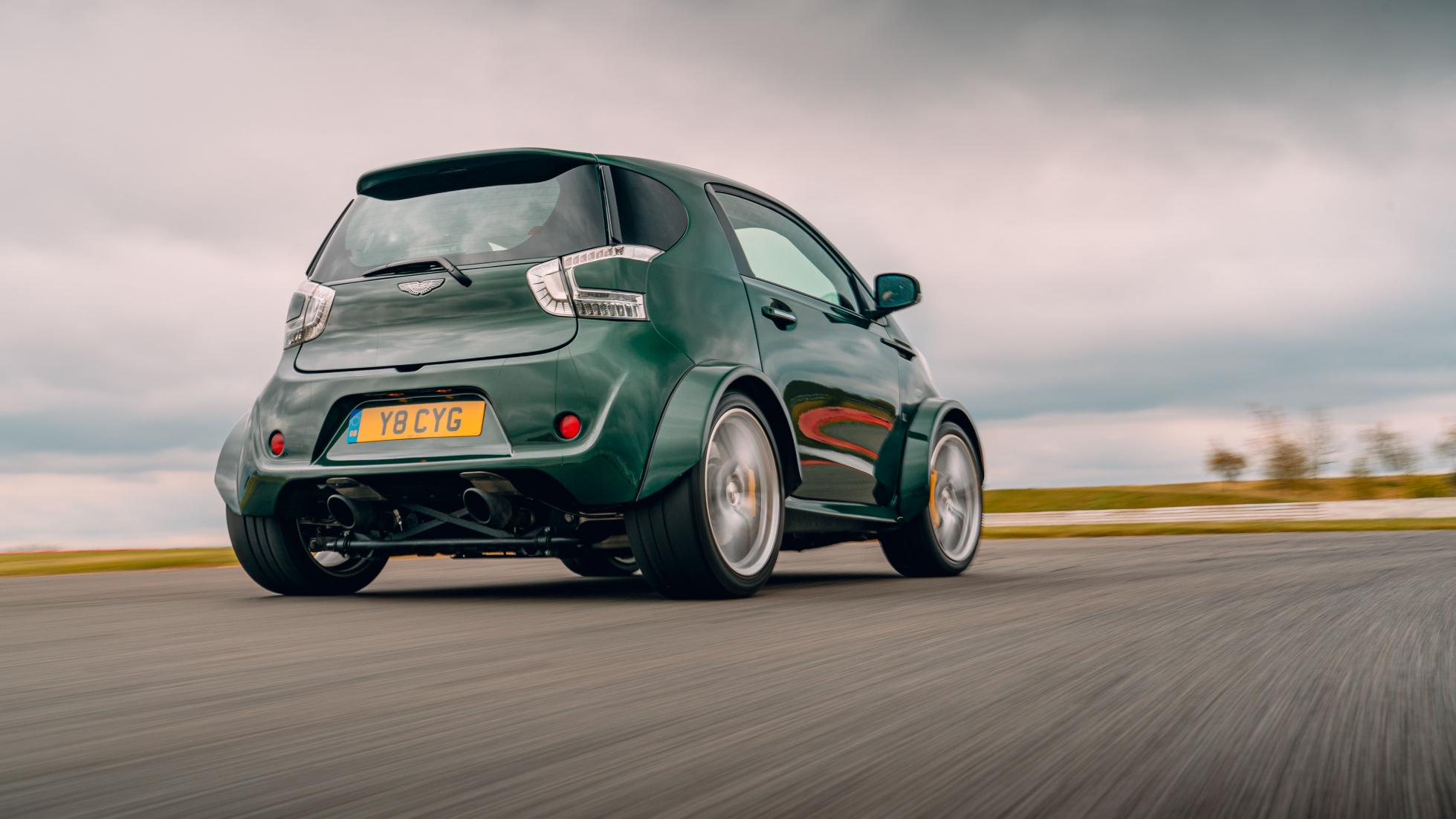
DRIVING – What is it like on the road?
Naturally, it’s the V8 Cygnet’s noise that gets you first. And everyone who is in earshot of it, which is about 60 per cent of the planet at any given time. The whole process is akin to a horrendously dubbed foreign movie: the images your eyes see fail to match the soundtrack your ears hear as this little city car fires up with a load of revs and blub-blub-blubs away at idle. And safe to say, 430bhp in something with the proportions of a Victorian pram is quite potent. Being 250kg lighter than a Vantage, you could see one off to 97kph in 4.2secs. And if you’re brave/mad enough, apparently the top speed is 274kph. Which is plenty.
You sit high in the car, but the centre of gravity is low, largely as wedging that dry-sumped 4.7-litre 430bhp V8 up front meant it had to be. But you’d think such a large lump would mean it’d protrude half way back into the cabin. It doesn’t. In fact, apart from pedals positioned out to the right, there doesn’t seem to be much of a packaging penalty for replacing the 1.0-litre four cylinder with a motor of twice the cylinders and five times the capacity. But a motor with twice the cylinders and five times the capacity of what normally resides there creates quite a lot of heat through the bulkhead. There is air-con but it’s more of a cool yawn when competing with those thrashing pistons that are creating great energy up front.
Unsurprisingly, the engine commands proceedings. In this age of small capacity turbocharged engines, it really has to fight for torque and work hard, but it’s smooth, linear and one hell of an event chucking out torque and power through the rear transaxle gearbox and rear wheels. Yep, it’s rear-drive only and through Aston’s famously lazy Sportshift automatic gearbox. Admittedly, the seven-speed automated manual was never the Vantage’s strong point, but as the V8 Cygnet isn’t a fully developed production car, the ’box is super-sluggish; slipping gears and taking an age to engage a cog. But when it does, you’re snapped back and given all the power. With surprisingly good traction from the back wheels and being softly sprung, every prod of the throttle sees you point skyward, thinking you’re going to wheelie back onto the Vantage’s giant rear anti-roll bar.
Your ears smile as the revs hit the red line and a metallic whap of eight cylinders howls while you hold on and pray the V8 Cygnet doesn’t backflip. And when you smash the brake pedal, the 380mm/330mm brakes of the Vantage donor car activate and the super-Cyg appears to want to dive beneath the tarmac under braking. In such a small wheelbase, and with a soft damping setup, it keeps you on your toes but is not to be feared. Just adjusted to. Especially in corners.
The Cyg serves up plenty of mechanical grip from the independent double wishbone front and rear suspension – plus that low centre of gravity – and you can feel what’s going on thanks to direct, pointy steering with feedback enhanced thanks to a motorsport-inspired quick-release alcantara steering wheel. But there’s no traction or stability control – apparently at the owner’s request – so in the wet you have to be wary of the rear end and short wheelbase. Luckily, there’s also some added grip from the rather serious Michelin Pilot Cup 2 tyres. Well, in the dry. But once you get under its skin and work out the unique nuances of the suspension and diff set up (it likes to spool up the wheel you’re not expecting) there’s a lovely balance and point where the car squats down on its soft springs, gather traction and can just load up and fire off in the distance with a small amount of opposite lock. Not too dissimilar to a go-kart on a wet track.
ON THE INSIDE – Layout, finish and space
Not your normal city car inside, is it? Quite a lot more racy. To make the packaging work, the V8 Cygnet had to become a strict two-seater, with a pair of supportive, fixed wing-backed Recaro buckets in place of the original, if not a little odd, ‘3+1’ Toyota iQ layout. It’s stripped out, with plenty of bare carbonfibre trim covering the dashboard and door cards.
It’s not the easiest thing to get in either, having to clamber over the roll cage, drag your other leg by the knee in and pin yourself into the seat via five-point harness. Where you realise you can’t reach the carbon door. So have to undo the belts and start all over again.
The cabin is full of old Vantage hardware, though. Slotting the hefty crystal key into the dash, the opposing dials race around the clock as the engine barks into life. The V8 then settles into a weirdly hypnotic deep gurgle as you prod the D in the dash, release the fly-off handbrake (now mounted in the transmission tunnel and taking up half the cockpit) and then realise you haven’t adjusted the rear-view mirror. So have to take the belts off again. For the third time. But trust us, the theatre and faff is worth it.
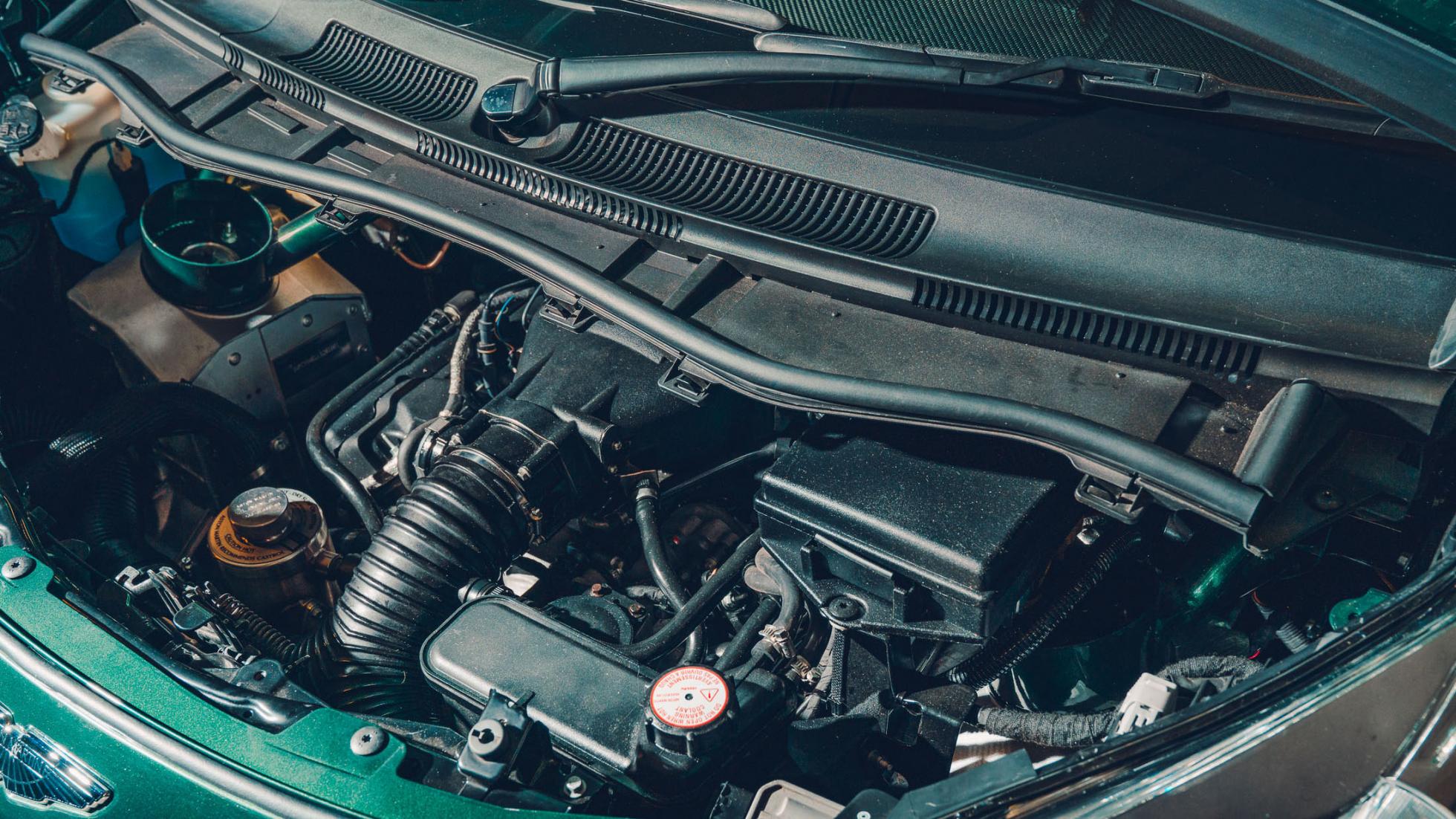
OWNING – Running costs and reliability
Given there’s only – and will only ever be – one in existence, we’re not sure any of this really matters. But if you are the owner and you do want to know what it’s going to be like to own your V8 Cygnet, here’s a brief summary: expensive.
Not only is the commissioning cost outrageous for a small city car, but given it’s only got a titchy fuel tank (scrawled over in Tippex signatures by the Aston team) in the boot feeding a monstrous engine, it’s not very good on fuel. Especially as the fuel gauge is a bit dicky, so it’s very easy to run out. But it’s also going to be tricky to insure. And from behind the wheel, it’s impossible to fathom the size of the thing with the arches sprouting out a lot further than the bodywork, so those very expensive diamond-cut 19-inch wheels are ripe for a kerbing. So that’ll probably cost you. As will the congestion charge. And ULEZ when it comes in. So as a city car it’s pretty useless. But that doesn’t matter. Because it’s also excellent.
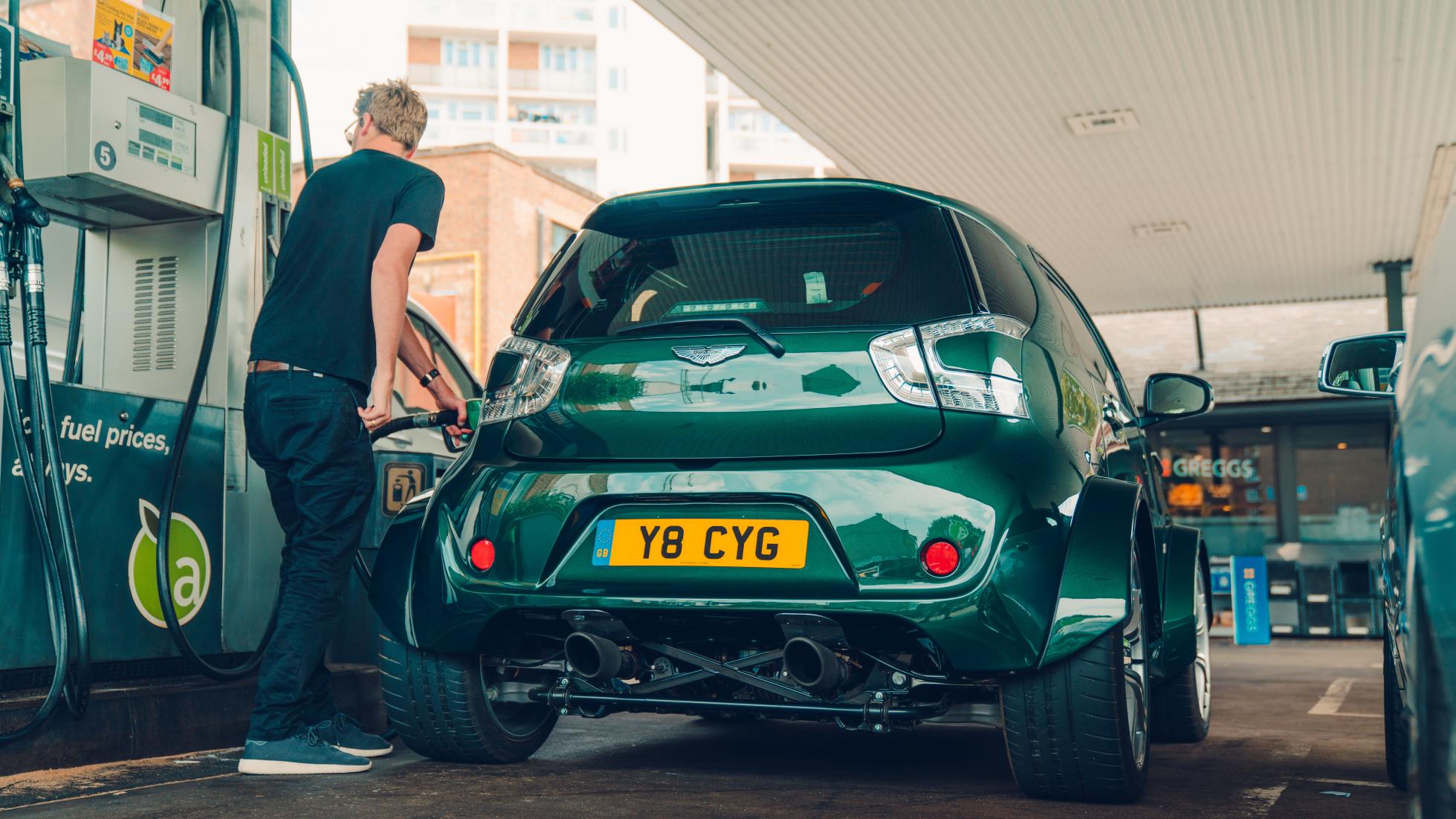
VERDICT – Final thoughts and pick of the range
"The one-off Cygnet V8 is the most hilarious city car in history. Exuberant and entertaining. It’s… properly British"
The Cygnet V8 is hilarious. Exuberant and entertaining. It’s… properly British. Projects like this show that both Aston and its customers have a sense of humour. A quality that translates in every part of the city, and every part of the world. The V8 is a shot of serotonin for society. In London, it lifts people’s spirits, acts as relief in what can be a socially awkward city. See, unlike the original, this Cygnet is no joke. But it is hilarious.
Overall Verdict: 9/10
